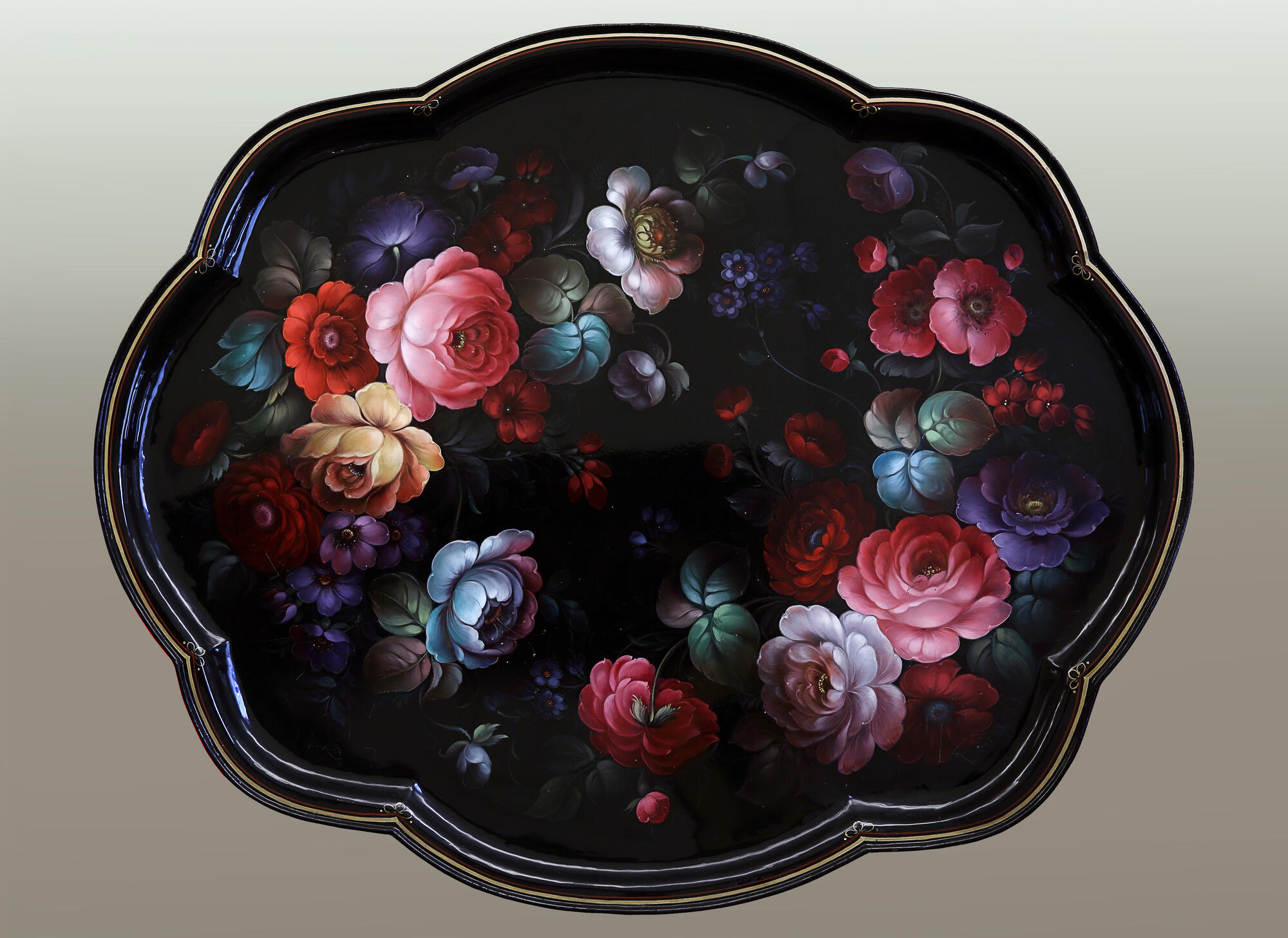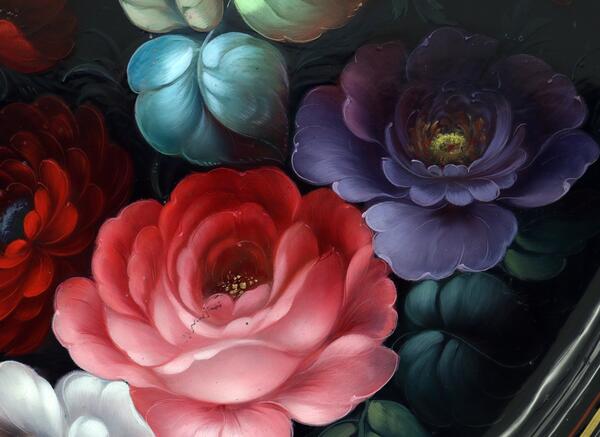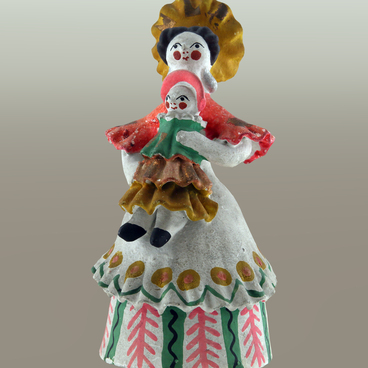About 25 kilometers to the north of Moscow is the village of Zhostovo. In the Soviet times, it became a famous center of a traditional craft with local residents decorating iron trays with beautiful floral paintings. This craft arose in the 1830s in a varnishing workshop that manufactured papier-mâché boxes and belonged to the family of Osip Filippovich Vishnyakov. The craftsmen depicted miniature oil paintings both on boxes and on metal trays.
Floral arrangements on Zhostovo trays do not look like a still life. Roses and small wild flowers resemble painting on porcelain — a pair of large roses with thorns surrounded by long leaning branches with small flowers and buds. The painting technique made the flowers especially “mobile” — the artisans held the tray on their knees and gradually turned it around. As in miniatures, the painting was applied in layers, and each layer was fired in an oven. At the end, the tray was varnished and sent back to the oven. This was the way to achieve the strength of the paint layer.
In 1928, several workshops merged into the “Metallopodnos” artel, which was transformed into the Zhostovo Decorative Painting Factory in 1960. The 1970s marked a new stage in the art of the leading factory artisans. Moscow art critics introduced them to the modern trend in fine arts and architecture — the “severe style” — and urged them to work differently. By that time the Zhostovo tray had lost its practical significance and rather became a decorative object. In new interiors, such as the Moscow hotel “Rossiya”, a composition of freely dispersed flowers instead of a lush, tightly tied bouquet would be more appropriate.
The presented tray was created by the outstanding craftsman Evgeny Petrovich Lapshin. The “Jubelee” tray arrests the viewer’s attention with its shimmering coloring and fine emotionality. Two flower garlands mirror each other along the tray’s diagonal. The center of each garland is a lush pink flower paired with yellow and white roses. The flowers are easily recognizable and painted in a voluminous manner, but they can hardly be called realistic — they live in their own fabulous black space, either entirely protruding, or almost completely immersing themselves into the background. The petals of the white roses feature some blue hues, which echo the blue flowers. One of the secrets of Zhostovo painting is that flowers are painted on a dark background with a translucent layer of paint, but of a different color. The visible trace of the brush stroke is another secret technique contributing to the emotionality of the composition.
Floral arrangements on Zhostovo trays do not look like a still life. Roses and small wild flowers resemble painting on porcelain — a pair of large roses with thorns surrounded by long leaning branches with small flowers and buds. The painting technique made the flowers especially “mobile” — the artisans held the tray on their knees and gradually turned it around. As in miniatures, the painting was applied in layers, and each layer was fired in an oven. At the end, the tray was varnished and sent back to the oven. This was the way to achieve the strength of the paint layer.
In 1928, several workshops merged into the “Metallopodnos” artel, which was transformed into the Zhostovo Decorative Painting Factory in 1960. The 1970s marked a new stage in the art of the leading factory artisans. Moscow art critics introduced them to the modern trend in fine arts and architecture — the “severe style” — and urged them to work differently. By that time the Zhostovo tray had lost its practical significance and rather became a decorative object. In new interiors, such as the Moscow hotel “Rossiya”, a composition of freely dispersed flowers instead of a lush, tightly tied bouquet would be more appropriate.
The presented tray was created by the outstanding craftsman Evgeny Petrovich Lapshin. The “Jubelee” tray arrests the viewer’s attention with its shimmering coloring and fine emotionality. Two flower garlands mirror each other along the tray’s diagonal. The center of each garland is a lush pink flower paired with yellow and white roses. The flowers are easily recognizable and painted in a voluminous manner, but they can hardly be called realistic — they live in their own fabulous black space, either entirely protruding, or almost completely immersing themselves into the background. The petals of the white roses feature some blue hues, which echo the blue flowers. One of the secrets of Zhostovo painting is that flowers are painted on a dark background with a translucent layer of paint, but of a different color. The visible trace of the brush stroke is another secret technique contributing to the emotionality of the composition.







